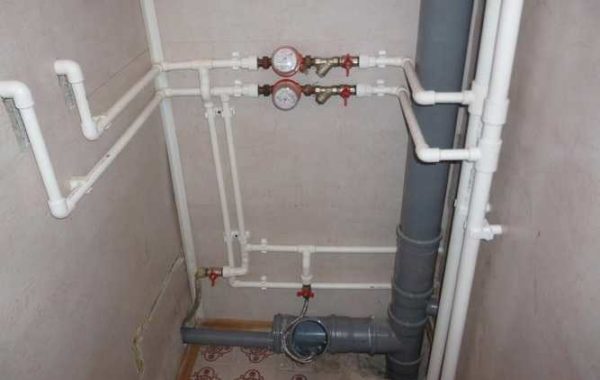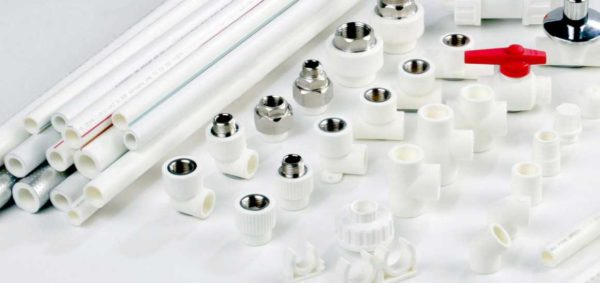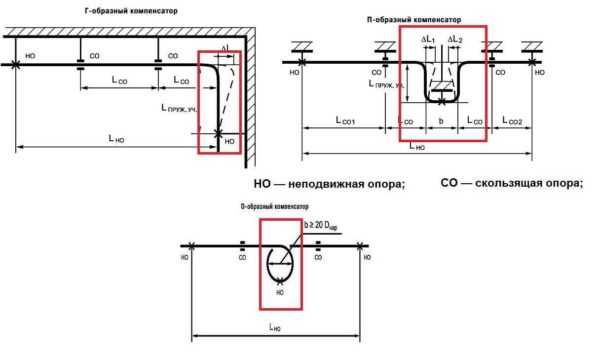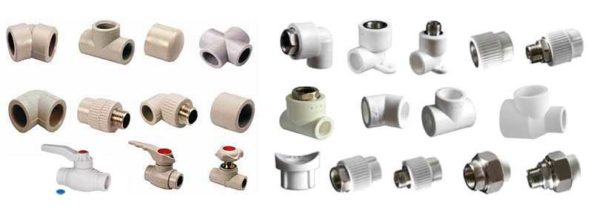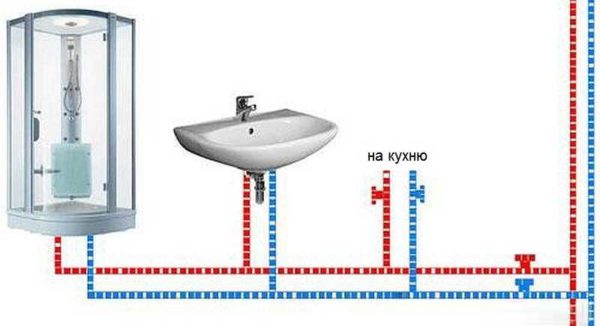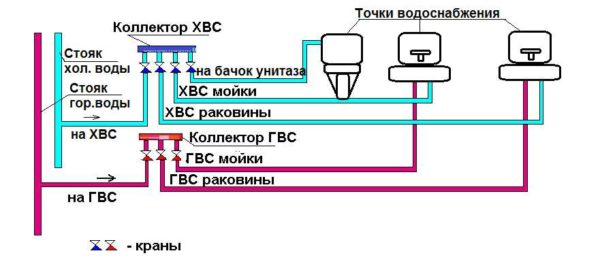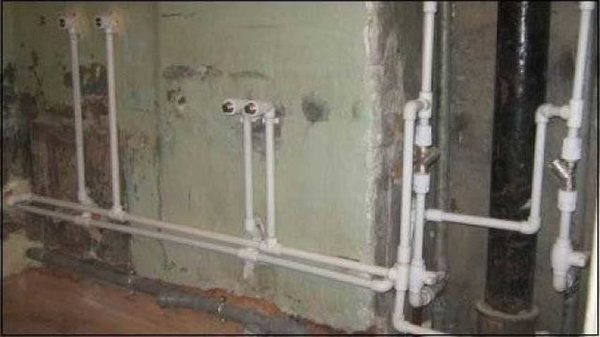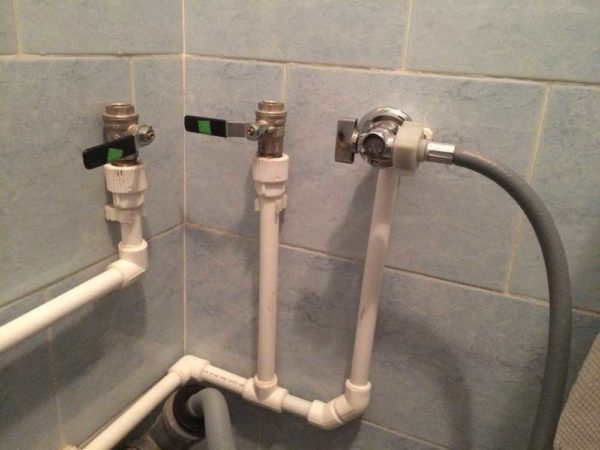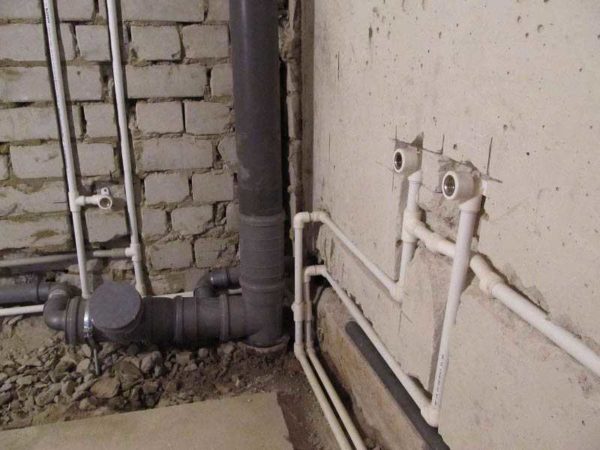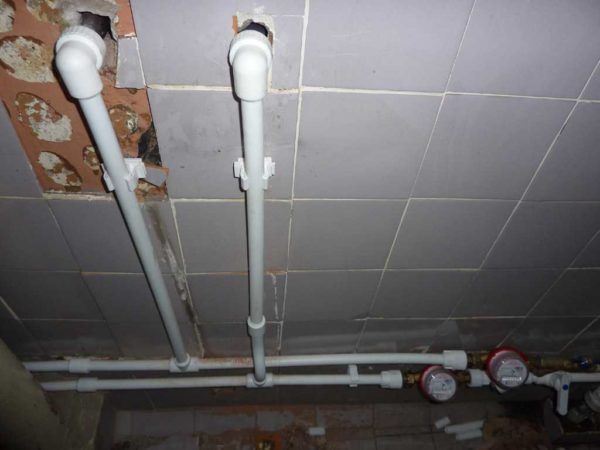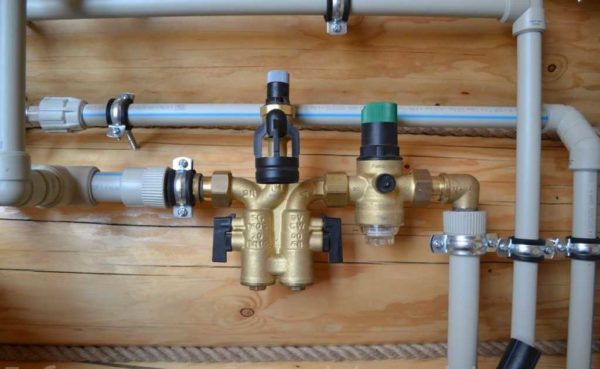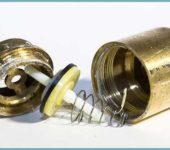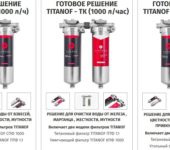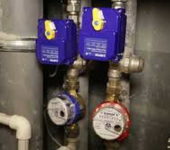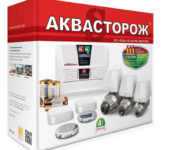How to make a plumbing from polypropylene pipes
New technologies and materials in construction appear constantly, gradually replacing traditional materials. A good example of this is the water supply system. Even fifteen years ago, metal was used in most cases - in general, there was no alternative. Today, almost everywhere, metal is changed to polymers, since they are easier to assemble, cost less, last the same or even more. One of the most popular modern materials is propylene. Installation of a water supply system from polypropylene pipes is good because you can do it yourself. This will require a special soldering iron and some experience. A soldering iron can be rented, and experience is a gain. You can practice on the most inexpensive fittings and small pipe lengths.
The content of the article
Marking and scope
Start installation of a water supply system from polypropylene pipes it is necessary with the choice of the type of pipes. They are single-layer and three-layer, differ in wall thickness and, accordingly, have different purposes. To make it easier to navigate, they are labeled:
- PN10 - single-layer pipes designed for cold water in low pressure pipelines. Suitable for the distribution of polypropylene plumbing in private houses.
- PN16 - single layer pipes with a thicker wall. They can be used both for transporting cold water in systems with increased pressure (centralized), and for distributing the hot water system. Maximum permissible temperature + 50 ° C.
- PN20 - three-layer pipes with a fiberglass reinforcement layer. They can be used for installing a water supply system for transporting hot water, low-temperature heating systems. Maximum temperature + 90 ° C.
- PN25 - three-layer pipes reinforced with aluminum foil. They are used mainly for heating, can be used for hot water supply, but it is not economically feasible: these are the most expensive pipes, and their quality for hot water supply is excessive.
There are gray and white polypropylene pipes by color. This is not reflected in the quality, so choose according to your aesthetic preferences. Some firms (mostly German) paint their products green. If the wiring is hidden - in the walls or in the floor - you will not find anything better, since the Germans are leaders in quality.
To make it easier to navigate the area of application, colored stripes are applied along the PPR pipes. Those intended for cold water are marked in blue (light blue), for hot water and heating they are marked in red, universal ones - in orange. Some manufacturers have adopted a different marking. They mark products for heating and hot water supply in red, and do not apply them to those intended for cold marking.
From the above, the following conclusions can be drawn: it is better to install a water supply system from polypropylene pipes in an apartment from PN 16 for cold water and PN20 for hot water supply. In a private house, you can do with PN 10 for cold water and PN 20 for hot water supply.
Installation features
Single-layer PPR pipes PN 10 and PN 16 have a high coefficient of thermal expansion: with a temperature difference of 100 ° C, each meter becomes 1.5 cm longer.Even taking into account the fact that such a temperature difference in real life is unattainable, this is a very large figure.So that this increase in length does not destroy the water supply system, compensation loops (compensators) are provided in the system.
If the length of the pipeline is small and cold water is diluted at the same time, the compensator can be omitted - the difference in length will be small, but it is advisable to make at least an elementary L-shaped compensator on the hot water supply (see figure).
Connection principle
Polypropylene pipes have a lot of advantages, but one of the disadvantages is that they do not bend. Therefore, when installing a water supply system from polypropylene pipes, fittings are used for all branches and turns. These are special elements - tees, elbows, adapters, couplings, etc. There are also taps, expansion joints, bypasses and other system elements, also made of polypropylene.
All these elements are connected to pipes by soldering. The material of both parts to be joined is heated until melted, then joined. As a result, the connection is monolithic, so the reliability of the polypropylene water supply system is very high. Read more about soldering and the necessary tools for this read here.
For connecting with other materials (metal), for switching to household appliances or plumbing fixtures, there are special fittings. On the one hand, they are completely polypropylene, on the other, they have metal threads. The size of the thread and its type are selected for the type of connected device.
System planning
Due to the fact that the PPR of the pipe does not bend, when developing a wiring diagram it is necessary so that there are as few detours and turns as possible. After all, they are all made with fittings, and they have a solid cost (compared to a pipe). Therefore, we try to optimize the layout - to make as few turns, detours and bends as possible.
Serial (tee) connection
Installation of a water supply system from polypropylene pipes with a series connection of consumers (plumbing and household appliances) is used in small systems. Usually they have 5-6 connection points. With such an organization of the water supply, one pipe departs from the riser, it sequentially bypasses all connection points. In the case of PPR-plumbing, all branches are made using tees, therefore this type is also called tee.
The advantage of this system is that a small number of pipes are needed, and the minus is that the pressure on each branch drops. As a result, with one or two working parsing points, the third located further from the riser, the pressure may simply not be enough.
Parallel (collector) wiring
A parallel connection scheme is also called a collector. This is because after the outlet from the riser, a special device is installed - a collector. This is an element with one input and several outputs. Available in polypropylene and metal. For plumbing, polypropylene manifolds are more suitable (and cheaper).
The connection diagram is such that a separate pipe is drawn from each branch to each consumer (sometimes to a small group of consumers).
The advantage of such a system: the pressure at all points of water parsing is the same, the disadvantage is that a lot of pipes are required. Another plus - if any branch fails, only one consumer does not work. The rest of the system is functioning normally. By the way, in order to be able to turn off individual devices, taps are placed at the outlet of the collector (usually ball valves, but if you need the ability to adjust the pressure, you can put a valve).
Eyeliner with plumbing and household appliances
In each of the methods for installing a water supply system from polypropylene pipes, a pipe is suitable for a specific consumer. There are two ways to connect to the system: flexible and rigid.
Rigid piping is more reliable: PPR pipes and fittings are highly durable. In addition, in this case there is only one thread - at the point of consumer connection. But this type of liner requires high precision of execution: the error can be only a few millimeters. It is difficult to achieve this when installing a polypropylene water supply system with your own hands, therefore, flexible eyeliners are often used. Just be careful, in some cases its use is impossible: connect gas boilers or gas water heaters, supply water to storage water heaters, water heated towel rails only recommend using rigid eyeliner.
Soft liner, on the other hand, does not require high accuracy - errors are leveled by a flexible stainless steel braided hose or a hose that is used for connecting the washing machine or dishwasher. Tubes are taken out approximately in the area where equipment is installed or plumbing is connected. It ends with an adapter for metal, to which a flexible hose is connected (with its second end, it connects to the device).
This option is less reliable, since a lot depends on the quality of the flexible liner. Also, not the most pleasant moment is the presence of two threaded connections, and this is a potential place for a leak.
Internal or external gasket
One of the advantages of a polypropylene water supply system is that it can be embedded into walls and floors without any problems. This material does not corrode, does not react with any materials, does not conduct stray currents. In general, if the connection is made correctly, the pipes can be hidden in the wall or in the floor without any problems. The whole catch is to make a good connection.
To make sure that the assembled system does not leak, they check it - carry out crimping excessive pressure. There are special devices for this. They connect, pump water, increase pressure. The water supply is left under this pressure for several days. If no leaks were found, then at operating pressure everything will work for a long time and without problems.
Installation rules
Before starting work, you need to draw up a diagram, mark on it all the necessary fittings and system elements (meters, filters, taps, etc.), put down the dimensions of the pipe sections between them. According to this scheme, then we calculate what and how much is needed.
When purchasing a pipe, take it with some margin (meter or two), fittings can be taken exactly according to the list. It will not hurt to agree on the possibility of a return or exchange. This may be necessary, since often in the process, the installation of a water supply system from polypropylene pipes throws up some surprises. They are connected mainly with a lack of experience, and not with the material itself and happen quite often even with the masters.
In addition to pipes and fittings, you will also need clips that attach everything to the walls. They are installed on the pipeline every 50 cm, as well as near the end of each bend. These clips are plastic, there are metal clips and clamps with a rubber gasket.
For open pipe laying in technical rooms, it is more convenient to use brackets, for better aesthetics - for open pipe laying in the bathroom or in the kitchen - plastic clips of the same color as the pipes themselves are used.
Now a little about the assembly rules. The system itself can be assembled immediately by cutting pipe sections of the required length, constantly referring to the diagram. It is more convenient to solder this way. But, with a lack of experience, this is fraught with errors - you must accurately measure and do not forget to add 15-18 millimeters (depending on the diameter of the pipes) that go into the fitting.
Therefore, it is more rational to draw the system on the wall, designate all fittings and elements.You can even attach them and draw outlines. This will make it easier to evaluate the system itself and identify deficiencies and errors, if any. This approach is more correct as it gives more precision.
Next, the pipes are cut as needed, fragments from several elements are connected on the floor or on the desktop. Then the finished fragment is set in place. This sequence of actions is the most rational.
And how to quickly and correctly cut pipe sections of the required length and not make mistakes.

